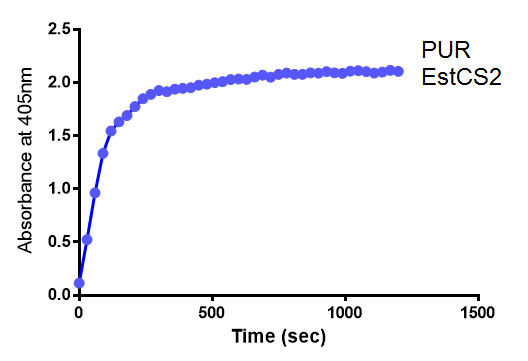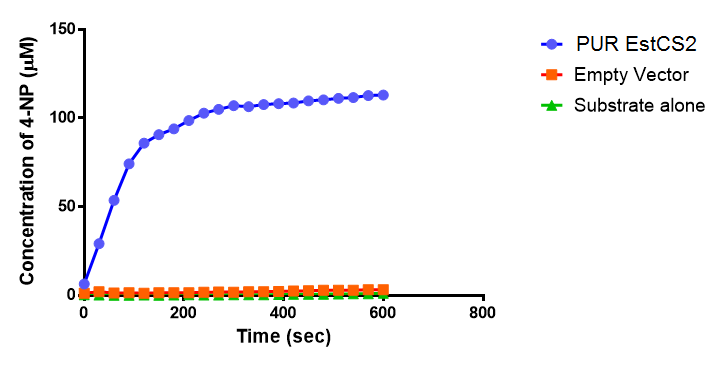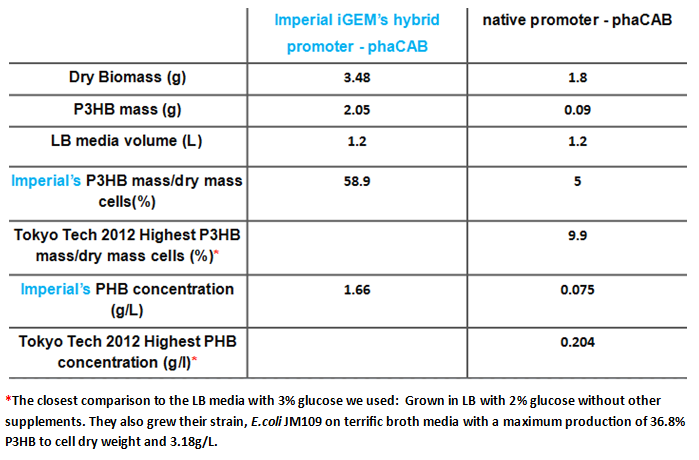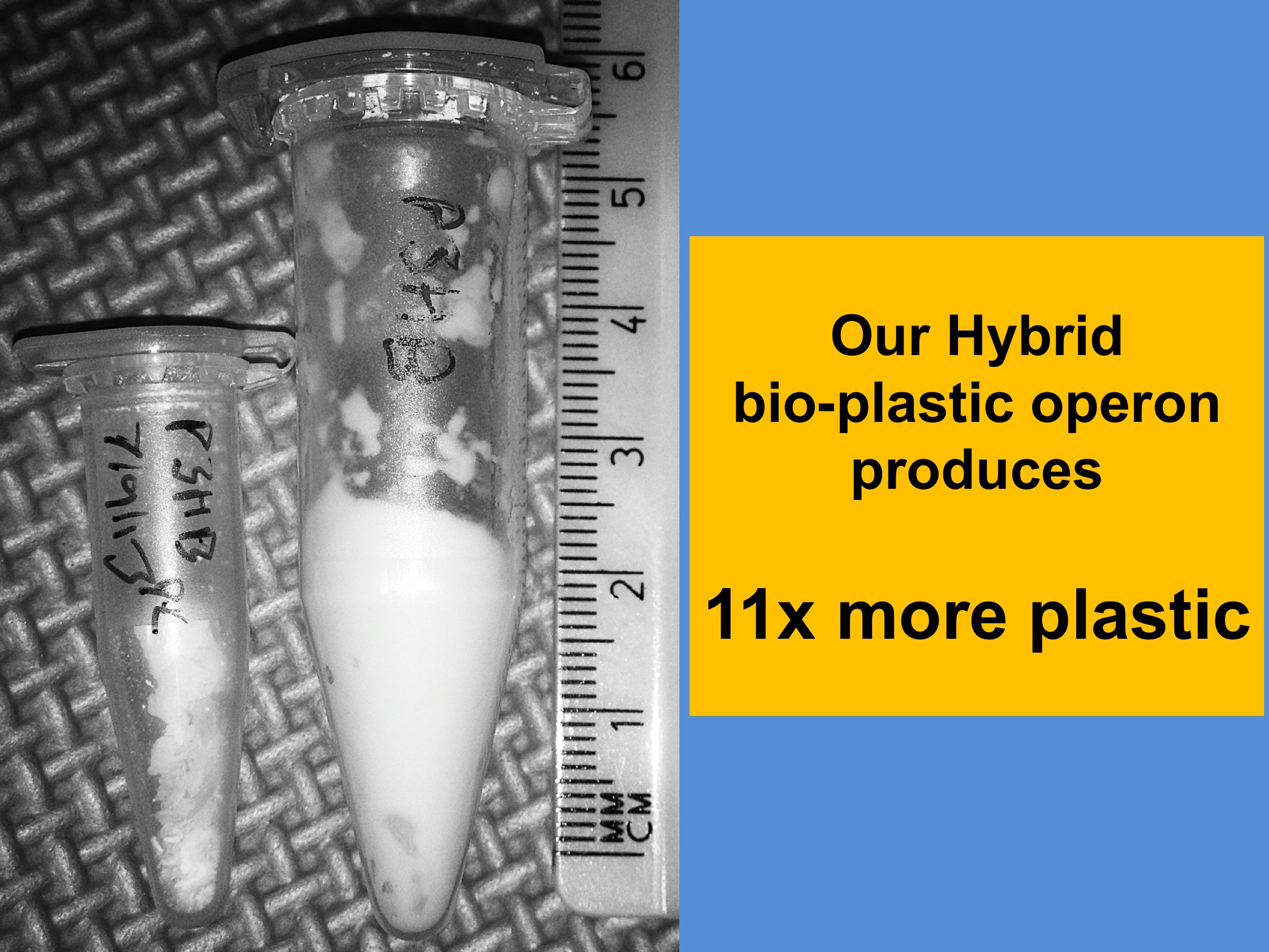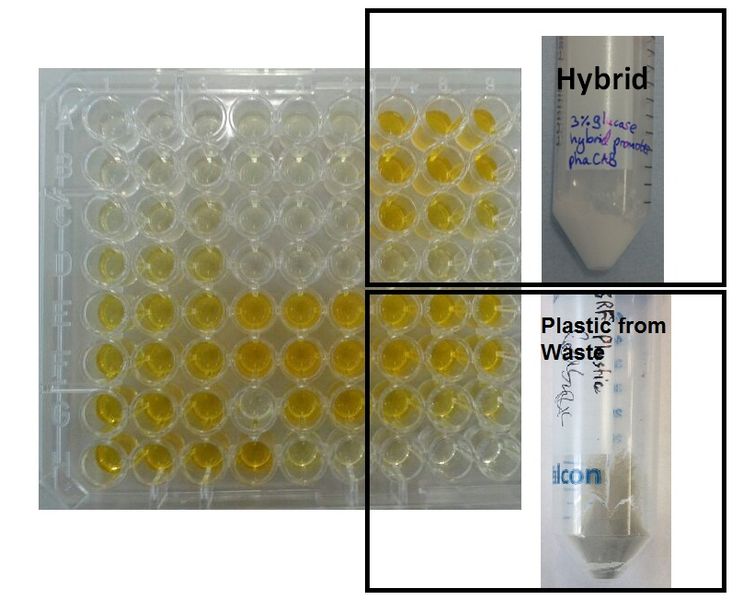Team:Imperial College/mainresults
From 2013.igem.org
Main Results
Resource-full Waste
Plastic Fantastic
E. coli breaks down PUR ▼
We proved the PUR esterase activity of EstCS2 in colourimetric assay with the substrate analog para-Nitrophenyl butyrate. This result is important because we now have enzyme to break down a common material in mixed plastic waste.
E. coli grows on ethylene glycol ▼
We tested cell growth in ethylene glycol, which is a PUR degradation product. We showed that at 37°C, cell growth is not significantly affected by the concentration of ethylene glycol. Thus our engineered bacteria can grow in the bioreactors!
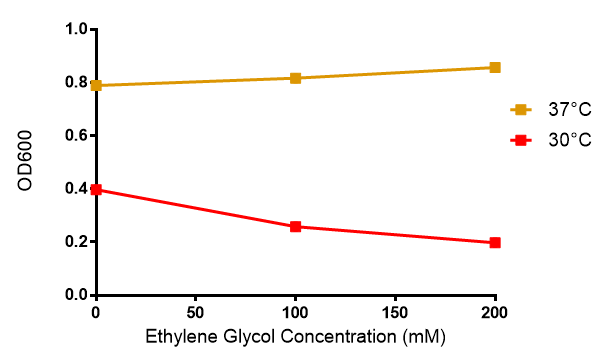
Modelling ▼
Using model simulation results, we predict that the concentration of PhaCAB enzymes
Optimised bioplastic production ▼
Since our model predicts that the concentration of PhaB enzymes is the rate limiting step in P3HB production, we designed a hybrid promoter consists of the J23104 constitutive promoter and the native promoter to optimise gene expression. Our results show that we have successfully produced 10-fold more P3HB bioplastic compared with the native promoter.
Bioplastic from mixed waste ▼
One of the objectives of Module 1 is to produce P3HB bioplastic from waste. By comparing degradation product 3HB of P3HB bought from Sigma, produced from glucose and produced from the waste, we found there is no significant differences in 3HB concentration between these samples.

E. coli grows in P3HB and 3HB ▼
E. coli feeds on 3HB ▼
E. coli degrades P3HB ▼
Modelling P3HB degradation ▼
PLA degraded by E. coli ▼
 "
"




